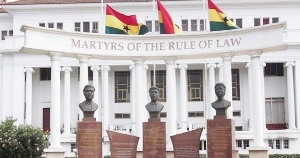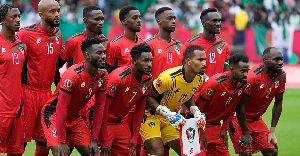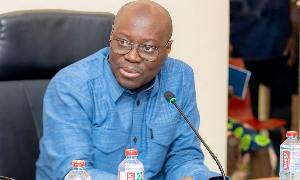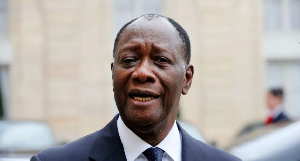A longstanding chieftaincy dispute in Kaleo, in the Upper West Region of Ghana, has taken a significant turn as members of the Nazieyiri sub-gate have petitioned the Supreme Court to overturn a ruling by the National House of Chiefs.
The crisis, which erupted in May 2014, revolves around the eligibility criteria for the installation of the next Kaleo Naa, the paramount chief of the area.
The Kaleo Traditional Skin became vacant following the demise of the respected Naa Banaanmwini Sandu II on February 17, 2014.
Before his death at age 75, he had unified the Traditional Area during his 34-year reign, earning the respect of not just his people but also his region and his country.
The petitioner, Yahaya Witol from the Nazieyiri sub-gate, has filed the case against John Putieha Badingu, challenging the National House of Chiefs’ declaration that it is the turn of the Nyagayiri section in Kaleo to nominate a candidate for enskinment as Kaleo Naa.
The crux of the matter lies in conflicting interpretations of the traditional succession process. The Nazieyiri sub-gate, through their petition to the Supreme Court, aims to set aside the National House of Chiefs’ ruling and assert the legitimacy of the procedure provided by the Judicial Committee of the Upper West Regional House of Chiefs for the nomination of a candidate by the Nayipaala Gate.
The respondents, led by Sanjie Mwinibankoro (substituted by Alhaji Shaibu Batuole), argue that it is the turn of the Bayuayiri and/or Goriyi gates within the larger Nayipaala gate to put forth a candidate for a new Kaleo Naa.
The Upper West Regional House of Chiefs previously ruled in favour of the petitioners and co-petitioners, establishing a road map for the nomination, selection, and enskinment of the next Kaleo Naa.
However, with the matter now escalated to the Supreme Court, the resolution of this chieftaincy dispute will be subjected to the highest legal scrutiny in the country.
Stakeholders within the Kaleo community, insist the implications reach beyond the local chieftaincy dynamics to the broader interpretation of traditional succession practices within the Ghanaian context.
The Supreme Court’s decision will play a pivotal role in shaping the future leadership structure of Kaleo and determining the rightful occupant of the revered position of Kaleo Naa.
The ruling by the Upper West Regional House of Chiefs in favour of the petitioners and the co-petitioners provided a roadmap leading to the nomination, selection, and enskinment of a Kaleo Naa.
Dissatisfied with the ruling of the Regional House of Chiefs, the respondents appealed to the National House of Chiefs in April 2020.
The National House of Chiefs, on November 24, 2023, affirmed the earlier decision by the Upper West Regional House of Chiefs—with variations—but gave no reasons for its decision.
Still not satisfied with the decision, the petitioners filed an action at the Supreme Court, asking the apex court to grant an order of interlocutory injunction against respondents, barring them from enskinning or outdooring any person as Kaleo Naa pending the determination of the application against the earlier ruling.
Before his death, Naa Banaanmwini Sandu II had served as Vice President of the National House of Chiefs and as a Board Member of the National Commission on Culture.
A dispute, however, erupted over the selection of his successor after his burial in May 2014.
Being from the Nayikori Chieftaincy Gate, his successor is to be chosen from the Nayipaala Gate since the Skin, by customary law, alternates between the Nayikori and Nayipaala Gates.
A Council of Elders was constituted in line with the customary law and practices of the people to commence the selection and enskinment process.
This council had representation from the four subgates of the main Nayipaala Chieftaincy Gate: Goriyiri, Mwanjaari, Nazieyiri, and Bayauyiri, and with representation from the Nayikori Chieftaincy Gate in observer status.
Disagreement, however, soon engulfed the Council of Elders’ consultative engagements.
The Nazieyiri and Mwanjaari sub-gate argued that the sole business of this Council of Elders was to determine which of the four sub-gates of Nayipaala main Gate was due to provide a candidate for the Skin, while the Bayauyiri sub-gate argued against any such determination since, as they claim, any person within the Nayipaala Chieftaincy Gate could be selected to ascend to the Skin as it was the turn of the Gate.
In effect, while Nazieyiri and Mwanjaari claim the Skin was rotational between the four subgates of Nayipaala (once it became the Gate’s turn to occupy the Skin), Bayauyiri claimed there is no such system of rotation and that any qualified person could aspire to ascend to the Skin.
While this disagreement persisted, Naa Seidu Batuole was nominated and elected by Nabikpeng Sanjie Mwinibankoro (deceased) and Ningkpeng Daniel Ziama as Kaleo Naa elect.
But, before the purported Naa elect could be enskinned, Nazieyiri took up the matter with the Regional House of Chiefs and was joined by Nyangayiri (an offshoot of Nazieyiri).
The case has since travelled from the Regional House of Chiefs to the National House of Chiefs and is now before the Supreme Court with an application for an injunction and leave to appeal against the National House of Chiefs’ decision.
Regional News of Friday, 9 February 2024
Source: therealdghana.com













